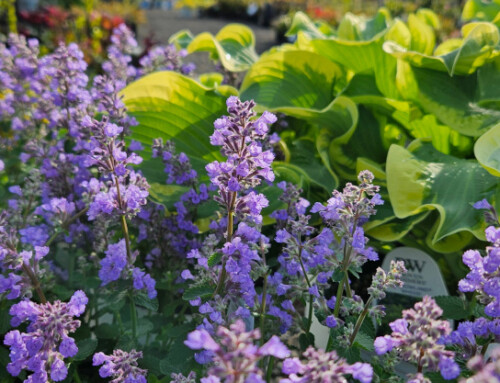In an old comic strip I read recently, the characters lamented the fact that even though the days of July and August are some of the longest of the year, the months seem the shortest. Indeed, summer’s balmy weather and long days are fading quickly, and as September ushers in the shortening of daylight hours and the beginning of a new season, it’s time to make the transition to early autumn around the yard. Here are a few tasks to accomplish in the garden this month.
First, now is a great time to refresh your planters for autumn. With milder temperatures here and your summer flowers fading, September is an ideal time to replant pots and flowerbeds with new color that will last through fall. Mums are one of the most popular flowers for fall but can finish blooming quickly if you buy them in full bloom or plant them too early. Look for plants that are budding and just starting to open for the longest-lasting bloom time. To prevent rain from spoiling the flowers, plant mums in a pot on a covered patio or porch where they can stay out of the rain.
Winter pansies are another great option for color all season and have a tough-as-nails disposition. Honestly, the colloquial term “pansy” to refer to a weak person is a terrible misnomer, since pansies are one of the hardiest flowers around. Great for planting as summer fades to fall, pansies will bloom freely until a hard freeze, then go dormant until early spring, at which point they’ll wake up and begin blooming again. I dare you to find another flowering annual that can perform like pansies do! Add to that the fact that pansies are inexpensive and come in a wide range of colors, and there’s no reason not to fill up some pots or flowerbed space with these great annuals.
Second, early autumn is an excellent time to plant a new lawn or repair thin or dead spots in an existing yard. In early spring, grass seed can take as long as two weeks (or more, depending on the weather) to sprout, but grass planted in early autumn will sprout in as little as five days. If a lawn project has been on your to-do list this year but you didn’t feel like planting in the heat of summer, right now is a perfect time to get it done.
Depending on the extent of your lawn-planting project, there may be several steps involved to get to the point of planting, but don’t skimp on what is arguably the most important part: the seed. Our unique Pacific Northwest winters are generally mild, but typically also come with a good amount of precipitation, occasionally in the form of snow. Many grass seed mixes are blended with a high percentage of perennial ryegrass, and although this type of grass sprouts and establishes quickly, it tends to be more susceptible to snow mold, an opportunistic fungus that kills off wet grass buried under snow for several days.
When picking the right grass seed for your lawn, I recommend our Vander Giessen Seed Mix, which is comprised of fifty percent fescue, the hardiest type of grass for our area. Tolerant of our wet Pacific Northwest winters, fescue is long-lasting, attractive, and durable. You may spend a little more money choosing a higher-quality grass seed, but most people I’ve met don’t want to reseed their lawn every year, so choose a high-quality mix like our Vander Giessen Seed mix and do it right the first time. And with a track record of growing gorgeous lawns in the Pacific Northwest for over 40 years, our seed mix is tested and proven!
Third, early autumn is one of the best times of year to plant shrubs, trees, and perennials around your yard. If you’ve recently settled into a new house and have an empty backyard that needs landscaping or you’re ready to replace some overgrown plants and redo your flowerbeds, early autumn offers warm soil for rapid root development, cooler air temperatures for lower transplant stress, and occasional rains returning in the coming weeks to help get your plants established before winter. Additionally, you’re likely to find many plants discounted at local garden centers this time of year, so you can stretch your gardening budget significantly further by planting in fall.
Finally, if you aren’t doing any replanting of your lawn or only have isolated areas you’re planning to reseed, now is the time to apply a preemergent to control lawn weeds—in particular, poa annua or annual bluegrass—over winter. Last month I wrote about using Bonide Crabgrass Plus for weed control through the winter months, and if you haven’t applied it yet this season, it’s not too late. Just be careful not to apply it in areas that you’ve seeded within the last six weeks or plan to yet this fall, as the herbicide can damage or kill new grass and keep seed from sprouting.
As the season begins to change and cooler weather arrives, September affords an excellent opportunity to invest some time tending to your landscape. Soon enough, fall rains will arrive and make gardening more challenging and messy, but for a brief time, we can enjoy gardening in pleasant conditions without breaking a sweat. Let’s make the most of this season and treasure the joy of being outside in the garden!








Leave A Comment